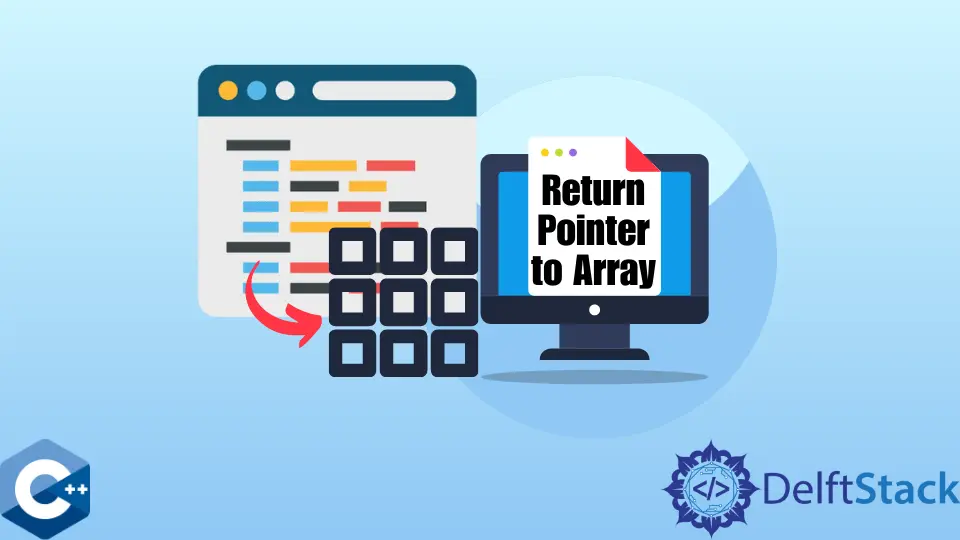在 C++ 中返回指向数组的指针

本文将讲解 C++ 中函数中返回数组指针的几种方法。
在 C++ 中使用 int var[n] 记法将数组参数传递给函数,然后返回
由于函数需要返回指针值,我们将假设数组是固定长度的。另外,如果我们必须将一个动态数组-std::vector 传递给函数,最好使用引用。
下一个例子演示了 subtructArray 函数,该函数减去了 array 中给定的 subtrahend 值。数组被声明为一个原始的 C-风格数组,这对于使用指针的操作非常有用。数组在传递的时候,参数的符号是 int arr[],但它在下面被编译器转换为数组的指针,我们可以在函数体中这样处理。最后,它直接使用变量名返回指针值,而不使用&运算符取其地址。
减去的数组元素会输出到控制台,输出最后一个元素后,有 cout 语句,在字符串字面中包含\b\b。这个转义序列意味着模拟了退格键行为,从而删除了控制台输出的最后两个字符。
#include <array>
#include <iostream>
using std::array;
using std::cin;
using std::cout;
using std::endl;
using std::string;
int *subtructArray(int arr[], int size, int subtrahend) {
for (int i = 0; i < size; ++i) {
arr[i] -= subtrahend;
}
return arr;
}
constexpr int SIZE = 10;
int main() {
int c_array[] = {1, 2, 3, 4, 5, 6, 7, 8, 9, 10};
int num = 15;
int *ptr = subtructArray(c_array, SIZE, num);
cout << "array1 = [ ";
for (int i = 0; i < SIZE; ++i) {
cout << ptr[i] << ", ";
}
cout << "\b\b ]" << endl;
return EXIT_SUCCESS;
}
输出:
array1 = [ -14, -13, -12, -11, -10, -9, -8, -7, -6, -5 ]
在 C++ 中使用 int* var 符号将数组参数传递给函数,然后返回
另一种传递固定大小的数组的方法是用 int* var 符号声明一个函数参数,并在函数体完成处理后返回指针值。注意,接下来的示例代码使用 std::array 容器,并调用 data() 方法来检索存储数组元素的指针。return 语句和上一个方法一样使用变量名。
#include <array>
#include <iostream>
using std::array;
using std::cin;
using std::cout;
using std::endl;
using std::string;
int *subtructArray(int *arr, int size, int subtrahend) {
for (int i = 0; i < size; ++i) {
arr[i] -= subtrahend;
}
return arr;
}
constexpr int SIZE = 10;
int main() {
array<int, SIZE> arr1 = {1, 2, 3, 4, 5, 6, 7, 8, 9, 10};
int num = 15;
int *ptr2 = subtructArray(arr1.data(), arr1.size(), num);
cout << "array2 = [ ";
for (int i = 0; i < SIZE; ++i) {
cout << ptr2[i] << ", ";
}
cout << "\b\b ]" << endl;
return EXIT_SUCCESS;
}
输出:
array1 = [ -14, -13, -12, -11, -10, -9, -8, -7, -6, -5 ]
Founder of DelftStack.com. Jinku has worked in the robotics and automotive industries for over 8 years. He sharpened his coding skills when he needed to do the automatic testing, data collection from remote servers and report creation from the endurance test. He is from an electrical/electronics engineering background but has expanded his interest to embedded electronics, embedded programming and front-/back-end programming.
LinkedIn